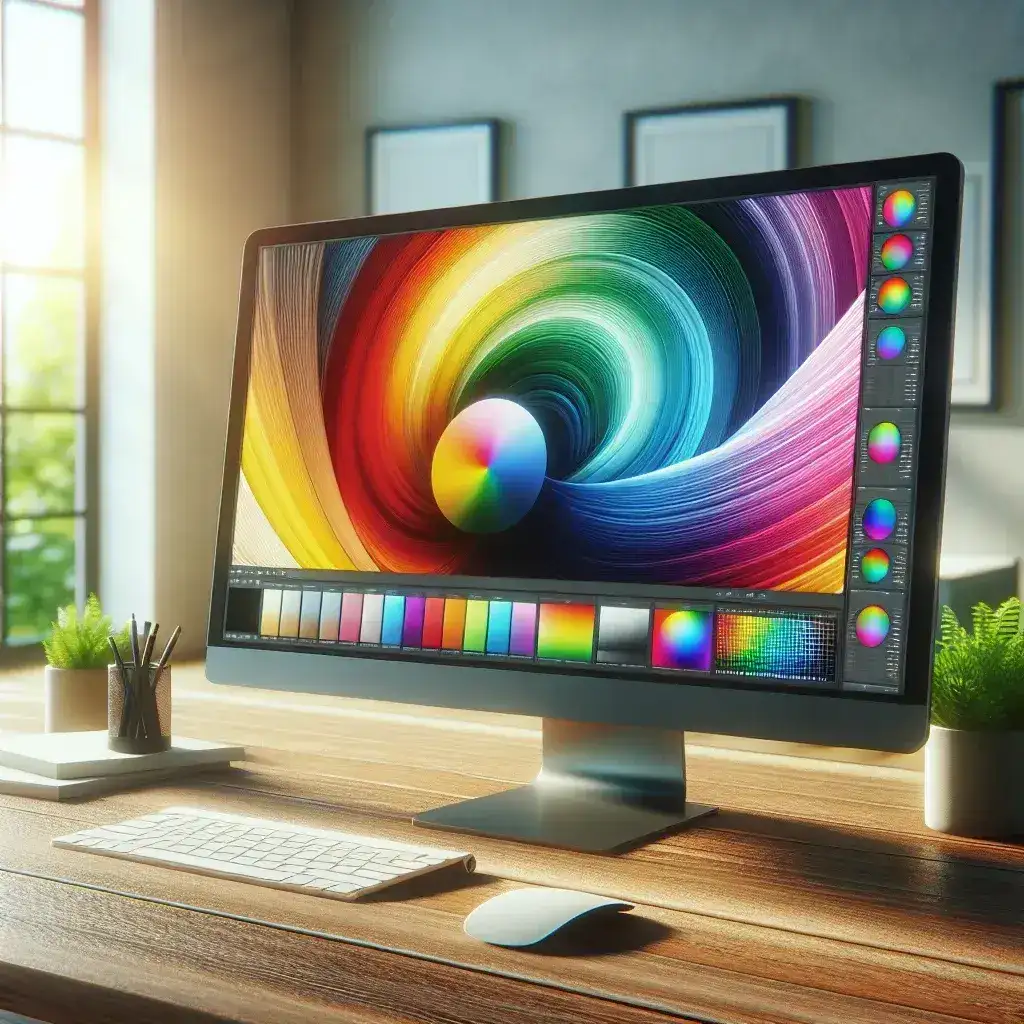Professional monitors play an essential role in industries such as graphic design, video production, and photography. One of the standout features of these monitors is their ability to support multiple color spaces. This capability is crucial for professionals who demand high precision and accuracy in color representation.
To understand the significance, it is essential to delve into the specifics of different color spaces and why supporting multiple ones is a game-changer.
| Color Space | Description |
|---|---|
| sRGB | Standard Red Green Blue, the most common color space for web content and most consumer monitors. |
| Adobe RGB | A color space developed by Adobe for capturing more vibrant and broader colors, commonly used in photography and print. |
| DCI-P3 | A color space used in digital cinema and high-end TVs, offering a wider color gamut than sRGB. |
| ProPhoto RGB | A large color space designed for high-end digital imaging with extensive color range beyond Adobe RGB and sRGB. |
| Rec. 2020 | A color space with an incredibly wide gamut designed for UHD and 4K broadcasting. |
Understanding Color Spaces
A color space is essentially a specific range of colors that can be represented in an image or display. Different industries and applications require different color spaces based on their needs. The most common color spaces used are:
- sRGB: This is the default color space for most online content and consumer-oriented devices. It offers a balanced color representation suitable for general use.
- Adobe RGB: This color space is preferred by photographers and designers because it covers more colors, particularly in the green and cyan regions, making it ideal for high-quality print.
- DCI-P3: Widely used in digital cinema, DCI-P3 provides a broader color range that offers enhanced vibrancy and realism in videos.
- ProPhoto RGB: Favored in professional photography, this color space covers a larger spectrum than Adobe RGB and sRGB, making it suitable for high-end digital imaging tasks.
- Rec. 2020: Designed for UHD and 4K content, Rec. 2020 offers the widest color gamut available, catering to advanced video production and broadcasting.
The Importance of Supporting Multiple Color Spaces
Professional work requires meticulous attention to color accuracy and consistency. Here's why supporting multiple color spaces is critical:
1. Precise Color Management
Different color spaces are necessary for various applications. For example, a designer may work in Adobe RGB for print media but switch to sRGB for web content. Having a monitor that supports multiple color spaces ensures that professionals can easily switch between them without compromising on color accuracy.
2. Enhanced Workflow
Supporting multiple color spaces streamlines the workflow for creative professionals. It eliminates the need for multiple monitors and reduces the time spent on color conversion and calibration, thereby improving efficiency.
3. Versatile Output
In industries that require diverse output formats, such as video production and digital imaging, the ability to work within different color spaces on a single monitor is invaluable. It guarantees that the final product will look as intended across different devices and platforms.
4. Better Client Collaboration
Clients often have specific color requirements based on their target medium. A monitor that can handle multiple color spaces allows professionals to accurately meet client expectations by delivering precise color representation, enhancing overall satisfaction.
Industries Benefiting from Multiple Color Spaces
Various industries benefit significantly from monitors that support multiple color spaces:
- Photography: Accurate color reproduction is critical in photography, especially when preparing images for print. Monitors supporting Adobe RGB and ProPhoto RGB allow photographers to work with a broader color palette, ensuring that prints are vivid and true to life.
- Video Production: In film and video production, working in color spaces like DCI-P3 and Rec. 2020 is essential for ensuring that the final product matches the director’s vision, particularly for high-end productions and UHD content.
- Graphic Design: Designers need precise color control for both digital and print mediums. Switching between color spaces like sRGB and Adobe RGB enables them to create designs that look right on all platforms.
- Broadcasting: Broadcasters benefit from Rec. 2020 support for 4K and UHD content, ensuring that broadcast colors are accurate and consistent across various display technologies.
Choosing the Right Professional Monitor
When selecting a professional monitor, consider the following factors:
- Color Accuracy: Look for monitors with high color accuracy and a wide color gamut. Calibration tools and factory calibration reports can be useful.
- Color Space Coverage: Ensure that the monitor supports the specific color spaces required for your work. Models covering multiple color spaces like sRGB, Adobe RGB, DCI-P3, and Rec. 2020 are ideal.
- Resolution and Panel Quality: High resolution and quality panels (like IPS or OLED) are essential for detailed work, ensuring sharp and clear displays.
- Additional Features: Consider features like hardware calibration, adjustable stands, and connectivity options that enhance usability and comfort.
Conclusion
Supporting multiple color spaces is a crucial feature in professional monitors, providing unparalleled accuracy, versatility, and efficiency for professionals across various fields. Whether you are a photographer, designer, video producer, or broadcaster, investing in a monitor that handles multiple color spaces can elevate your work to new heights, delivering consistent and precise color representation across different mediums.

